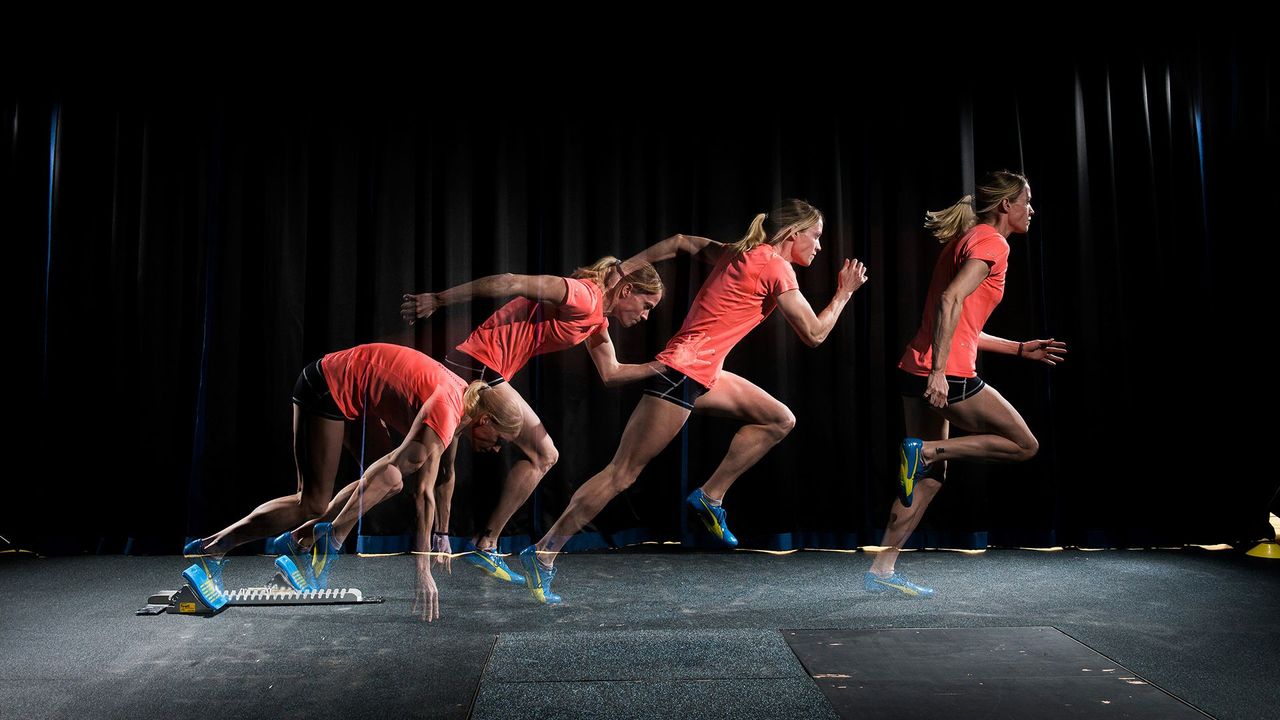Have you ever wondered if there’s something that you’re the best in the world at, but don’t know it because you’ve never tried? Maybe it’s fencing or chess, sculpture or flute, poetry or coding. With the Olympics on, and with me struggling through this running challenge, I’ve been thinking a lot about our genetic predispositions.
Look at Michael Phelps with his 80 inch wingspan, freakishly long torso, or his flipper-like size 14 feet that give him an edge in the water. Or Simone Biles with her 4 foot 8, muscular frame that allows her to perform such tricky rotations with power and force.
I know that a champion cannot be made without drive, dedication, and years of hard work. And I know that the relationship between genes and training is complex because success is the result of the combination of dozens, if not hundreds of factors. But let’s set that aside for now and focus on what we’re born… or not born with.
The Fiber of Running
Running is something I was NOT born to do. Sure, if I trained, I could probably become a competitive distance runner, but I’d never win at the highest level.
In an effort to understand what it is about my anatomy that makes running so challenging, I learned that our bodies have different types of muscle fibers that determine how our muscles respond to physical activity:
- Type 1: Slow twitch. Muscles contract slowly; efficient because they can carry more oxygen and therefore can sustain longer periods of aerobic activity. Better for running long distances.
- Type 2: Fast-twitch. More powerful, but carry less oxygen. Better for sprinting and strength training.*
*there are more categorizations, but this is the simple version
In general, we have about 50% fast twitch and 50% slow twitch muscle fibers, but most of us will naturally favor one or the other. Someone like Usain Bolt might have 70-80% fast twitch fibers, whereas Mo Farrah, the 10,000 meter Olympic Gold medalist, would have the opposite.
If I begin jogging, I use my slow twitch muscle fibers. As the run progresses or if my pace increases, my slow twitch fibers start to tire, at which point the fast-twitch fibers kick in. But since these fibers are suited for short bursts of high intensity activity, they wear out quickly, and I’m forced to slow down or stop altogether.
Over time, training changes the composition of the muscle fibers. Knowing this, I’ve been running or doing some form of exercise almost daily:
- jog longer distances at a significantly slower pace to make slow twitch fibers more efficient and resistant to fatigue (2x per week)
- sprints, hills and short repeats so that my muscles can generate more power without increasing effort (2x per week)
- run at tempo, slowly increasing speed each week (1x per week)
- strength training (2x per week)
Now, I can plank, sprint and run repeats and see rapid improvements, but put me on a treadmill I’m toast. My slow twitch muscle fibers must be quite weak (my 23andme DNA results confirm that I am “likely a sprinter”) because of how easily they tire, and how slowly they are strengthening.
This week alone, my two mile, 10 minute 30 second pace attempt ended after 1.5 miles. My trail run was over in 5 minutes. And my one mile (9 minute/mile pace) attempt ended after four.
My husband, on the other hand, can sit on the couch for six months and then go out and run five miles without breaking a sweat. He evidently has a large percentage of fatigue resistant muscle fibers.
I’m officially blaming my growing dislike of running on my DNA. I fully intend to see this challenge through, and I might even miraculously pull off an 8:30 mile in 12 days time. But I’m not going to force something that isn’t there. And once this month is over, I’ll be more than ready to move onto next month’s project.
Week 2 stats
- Mile run: 9 minutes, 18 seconds (12 second improvement, I sprinted for the last 90 seconds)
- Forearm plank: 3 minutes, 30 seconds (30 second improvement)











